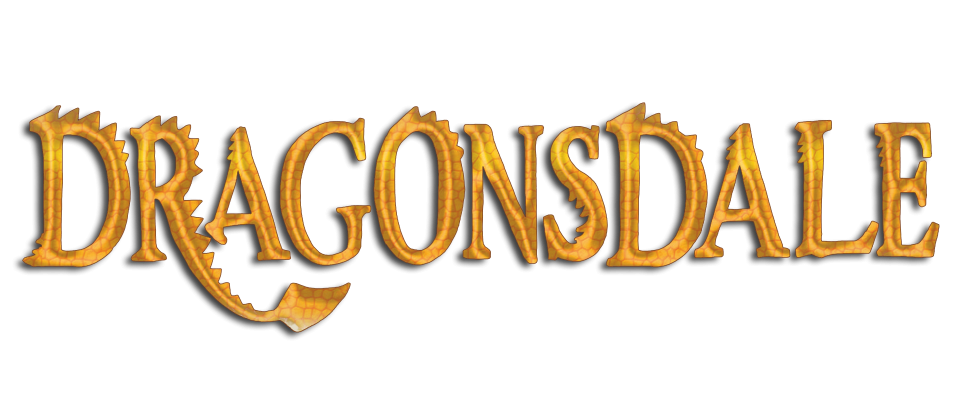TACK
AND EQUIPMENT
It is very important that your dragon’s
tack is always clean and in good condition. Leather must be soaped or oiled to
keep it supple, and iron or brass buckles polished.
Hand
reins and leg reins are vital for controlling your
dragon on the ground or in the air.
Straps
are used to make sure the saddle stays on the dragon, and…
Belts are for ensuring that the rider stays in the saddle!
A
Tether is a line that keeps an unseated rider safe
until the dragon can land.
All
must be checked regularly, especially the stitching. If a strap, belt or
teather is cracked it must be immediately replaced.
SADDLE
You should always make sure you are using
the saddle most suited to your age and experience. For example:
The
Blacksnape
has an oak frame and is very robust. This is the best type of saddle for
beginners and junior riders as it gives support for the less confident.
The
Springerton has a willow frame and is more supple,
but it offers less support and is therefore suitable for more advanced riders.
Saddling
Up
You must always make sure that the Belly
Strap and the Breast Strap fastening the saddle to your dragon are in good
condition, and fastened to be tight enough to prevent the saddle slipping, but
not so tight as to make the dragon uncomfortable.
The Stirrup Irons should be adjusted so
that you feel safe and secure in flight. Remember that when you are flying
upside down, you will be relying on the Stirrup Irons to keep you from falling
out of the saddle.
Safety
Harness
Your Belly Belt, Tether and Stirrup Irons
MUST BE SAFELY ATTACHED ALL THE TIME YOU ARE IN THE SADDLE!
RIDING GEAR
For working and hunting, riders should wear leather knee boots, breeches and a good quality
leather or sheepskin jacket or jerkin over a tunic of cotton, linen or wool. Leather
gauntlets and a good quality steel helmet with goggles are also required.
For Show flying, the
rules about what to wear are very strict: a rider who is not properly dressed
may be disqualified.
Competitors must wear knee boots and jodhpurs,
white kid gloves and a suitable riding habit – a woolen jacket in the colours
of the stud represented by the rider, or by private owners in their own
approved colours - with a hunting tie or a scarf, and a steel helmet, covered
in velvet, also in appropriate colours. It goes without saying that all riding
gear for a showing must be immaculate!
DRAGON
ILLNESSES AND THEIR TREATMENT
Care of your dragon is a vital part of
establishing and maintaining the Trustbond, and you should always make sure
your dragon is well and happy.
Colic: if your dragon sweats, paws the ground, gets up and
down, lies on its back or rolls around, it may be suffering from colic. This
caused by excess gas or fluid causing swelling of the stomach. Colic is treated
by a gallon of flax oil three times per day, administered by bucket tube and
funnel.
Bloat can be confused with colic, but if your dragon is
also hiccupping, coughing or dribbling blue-green flame, it may be suffering
from bloat. This is a serious condition in which a sudden build up of gas in the
second stomach is caused by too much exercise before or after eating. Overfeeding
dragons or allowing them to graze on plants covered in snow, frost or dew can
cause bloat. Even a small dose of Dragonsrue can lead to this condition. Bloat
cannot be treated by an owner and
requires IMMEDIATE SURGERY.
Scrape
If you spot your dragon trying to scratch itself,
or rubbing up against doors or walls, it may be suffering from scrape. In this
condition, the dragon’s scales become clogged up due to an excessive build up
of dirt between them. Scrape must be removed with a de-scraper and the scales
washed in vinegar – but a wise owner will not allow a dragon to become so dirty
as to develop scrape in the first place!
Wingflake This is a dragon’s equivalent of Athlete’s Foot, and appears as a
patchy fungal growth on its wings. It
occurs if dragons are not properly
groomed and dried down after exercise in wet conditions. The condition may be
treated with herbal ointments, rubbed onto affected areas.
Coker
A dragon with a
barking cough, swollen throat and excess phlegm is almost certainly
suffering from coker. This is caused by its
flame over-coking, which produces soot deposits that cause irritation and
coughing. The condition may be
treated with a daily dose of Coker
syrup (a mixture of oil, herbs and powdered coal: each stud has its own special
and secret recipe).
Set-fast or Wound-ill is a very dangerous condition, as the
dragon’s wings set in its flight position and the dragon loses all control of
its wing muscles. If this happens while the dragon is in the air, the
consequences can be very serious. Set-fast
is caused by infection of an open wound. The first
sign is stiffening of the jaw, followed by stiffness of the neck and difficulty
in swallowing. Other symptoms include high temperature, shivering and glazed
eyes, and a rapid heart rate. Spasms continue for 3–4 weeks, and complete
recovery may take months. The usual treatment is stable rest and hot herb poultices
applied every three hours.
A dragon suspected of developing Set-fast
MUST NOT BE ALLOWED TO FLY!



